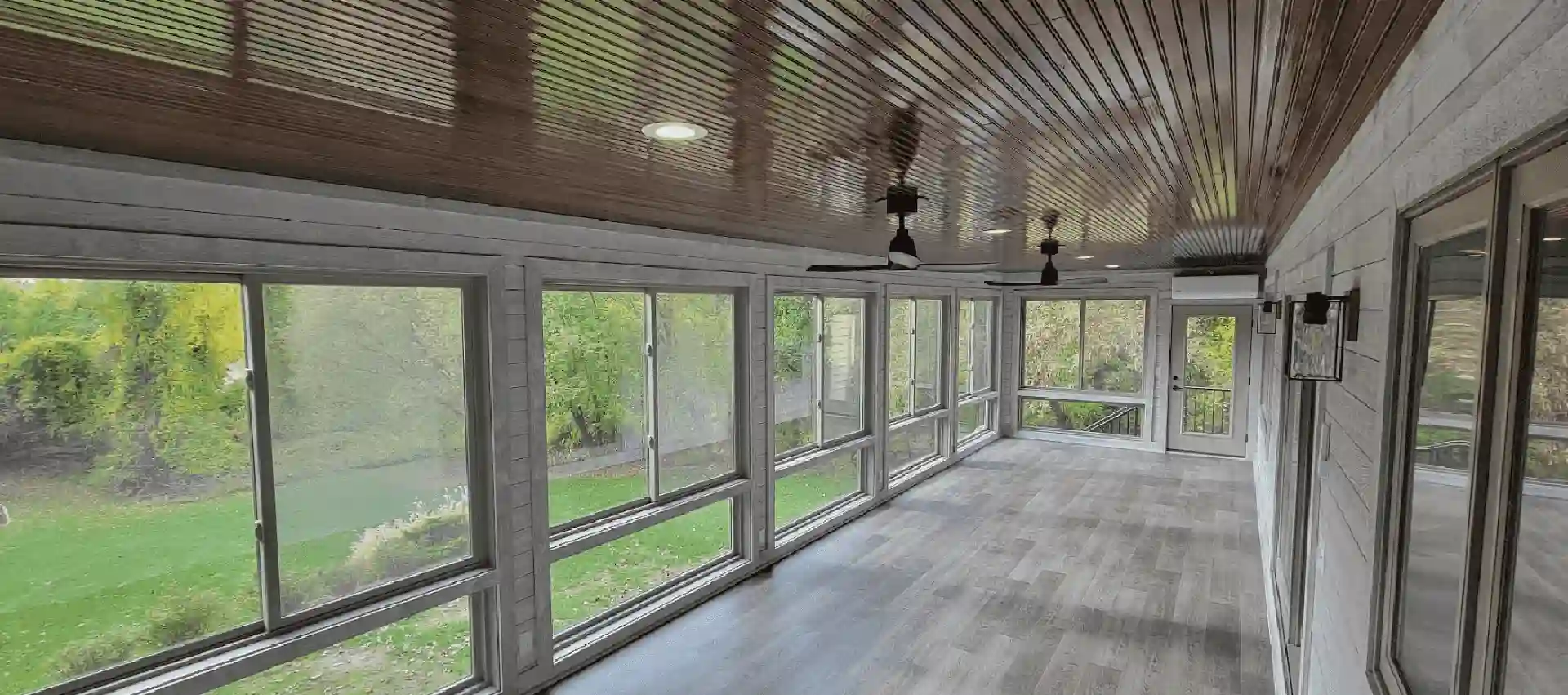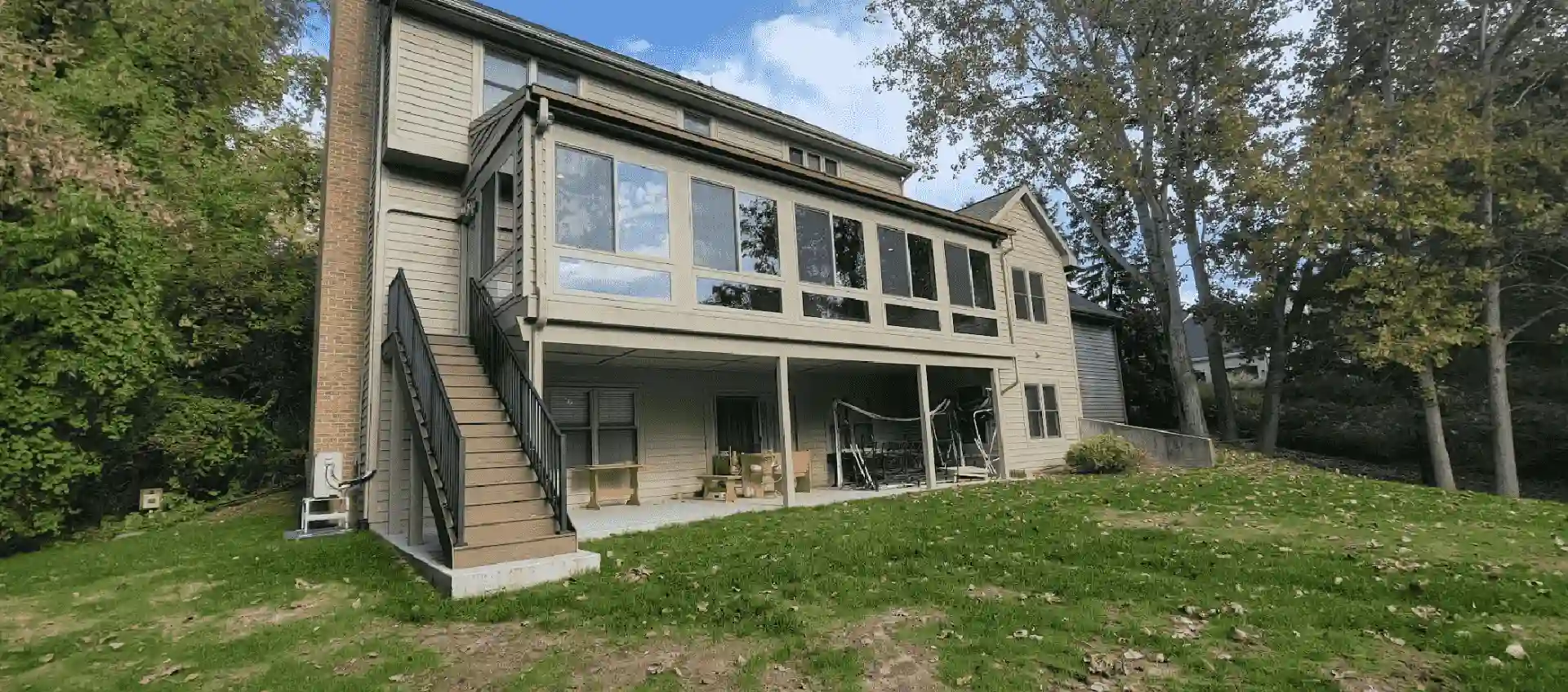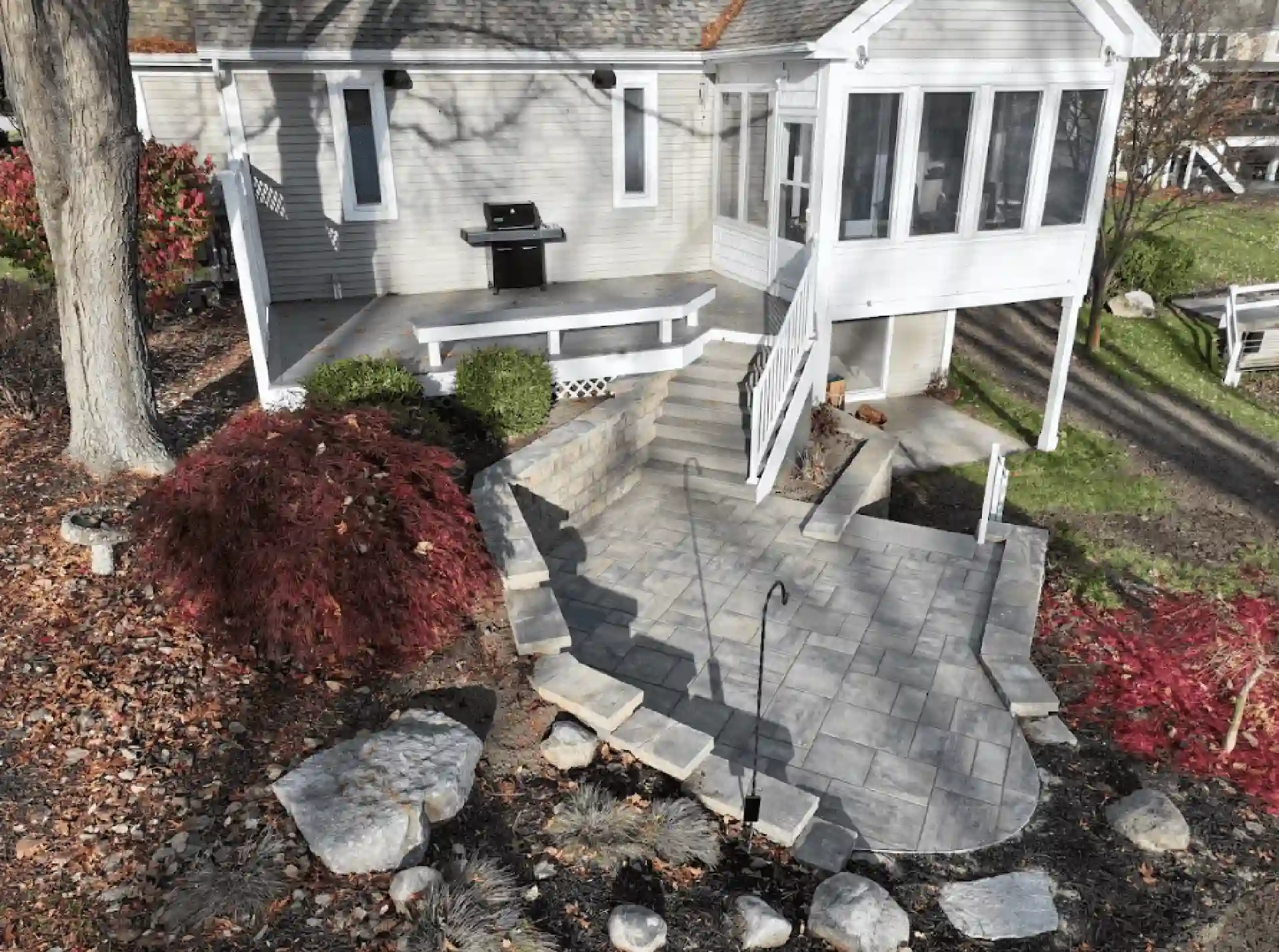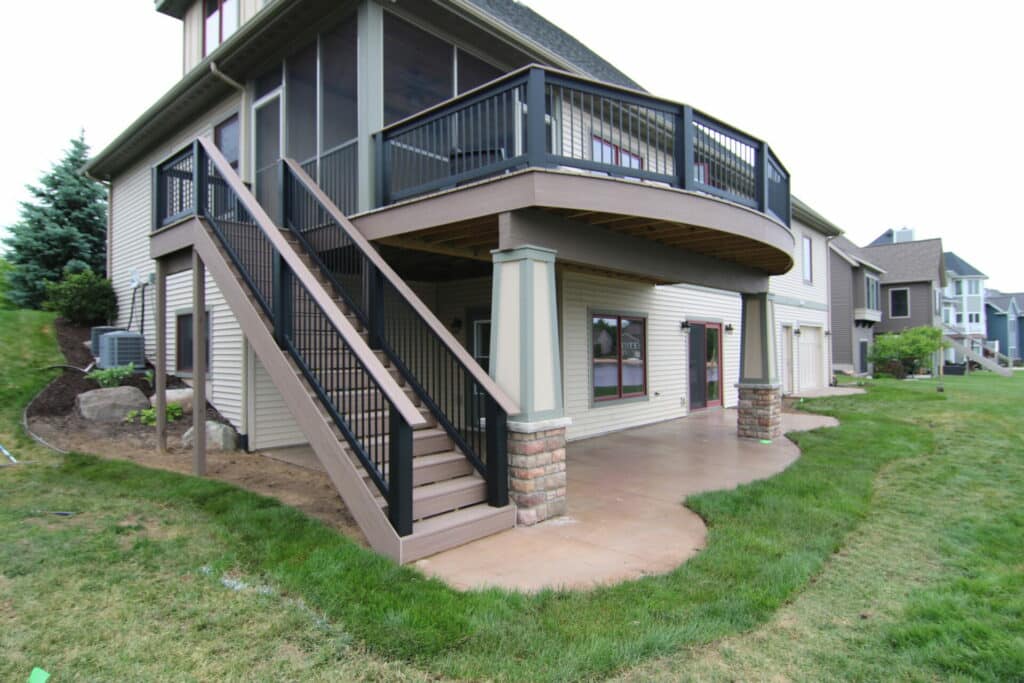3-Season Room or 4-Season Room: Which One Fits Your Lifestyle Best?
Precision Decks & Patios helps homeowners enjoy more outdoor living, regardless of the weather. A 3-season room offers a comfortable place to relax during spring, summer, and fall, while a 4-season room lets you enjoy outdoor views year-round.
Deciding which is right for your home depends on how you plan to use the space and what weather conditions you want to avoid. Here are some things to consider to help you choose between a three-season room or a four-season room:
What Makes a 3-Season Room Perfect for Relaxing in Mild Weather?
A 3-season room extends outdoor enjoyment by sheltering you from wind, rain, and bugs. While it’s not suited for freezing winters, it’s perfect for enjoying the outdoors without worrying about the weather.
- Lightweight Build: These rooms feature single-pane windows and aluminum frames, keeping them affordable and easy to install. Using lighter materials also creates an airy feel while minimizing construction time and cost.
- Seasonal Comfort: A 3-season room offers a cozy space to relax in spring, summer, and fall, but it doesn’t include heating or cooling systems. To enjoy cooler evenings, many homeowners add space heaters, electric fireplaces, or fans.
- Great for Social Spaces: These rooms are popular for screened porches and sunrooms, ideal for casual entertaining. With the right furniture and décor, they make excellent spots for family breakfasts, reading nooks, or hobby areas.
4-Season Rooms: A Year-Round Retreat for Every Weather

A 4-season room offers the luxury of outdoor views with the convenience of indoor comfort, no matter the season. It’s a fully enclosed space that connects to your home’s heating and cooling systems, keeping it comfortable all year long.
- Superior Insulation: Built with dual or triple-pane glass, these rooms prevent heat loss and block cold drafts. The added insulation keeps energy bills lower while maintaining comfort during extreme temperatures.
- Seamless Home Integration: Designed to blend naturally with your home’s structure, these rooms become extensions of your living space. Whether used as a family room, home office, or playroom, they feel like part of the main house.
- Weather-Ready Durability: Reinforced with vinyl, wood, or composite materials, these rooms stand up to wind, snow, and rain. Integrated HVAC systems ensure you stay comfortable in every season, no matter what’s happening outside.
The Key Differences Between 3- and 4-Season Rooms
A 3-season room offers a budget-friendly way to enjoy outdoor living during warmer months, while a 4-season room provides year-round usability. Here’s a breakdown of how these two options differ in terms of functionality, materials, and cost.
- Seasonal Use: A 3-season room works best during spring, summer, and fall, offering a comfortable spot to relax in mild weather. A 4-season room remains functional even during harsh winters, giving you year-round access to outdoor views without exposure to the elements.
- Insulation & Climate Control: Four-season rooms feature advanced insulation and are connected to your home’s HVAC system for reliable temperature control. In comparison, 3-season rooms have minimal insulation, limiting their use to moderate temperatures.
- Cost Differences: A 4-season room requires a larger investment due to high-end materials and construction, but it adds lasting value to your property. On the other hand, 3-season rooms are more affordable, making them an attractive choice for seasonal enjoyment.
Pros & Cons of the Different Outdoor Rooms
| Feature | 3-Season Room | 4-Season Room |
|---|---|---|
| Pros | – Lower cost, ideal for seasonal use. – Offers natural light and fresh air in mild weather. – Quick construction with lightweight materials. |
– Usable year-round with superior insulation. – Integrated with HVAC for consistent temperature control. – Adds significant value to your home. |
| Cons | – Limited to spring, summer, and fall. – Minimal insulation, making it uncomfortable in extreme temperatures. – Requires portable heaters or fans for extended use. |
– Higher initial cost due to advanced materials and construction. – Longer construction time, similar to home additions. – Higher energy usage with HVAC integration. |
| Ideal Use | Seasonal relaxation spaces such as sunrooms, screened porches, or casual sitting areas. | Additional family rooms, home offices, or entertainment spaces usable in all seasons. |
| Construction Materials | Lightweight materials like single-pane windows and alum | Durable materials like vinyl, wood, or composite with double or triple-pane glass. |
| Climate Control | No HVAC connection; portable heaters or fans needed for temperature control. | Integrated with home’s HVAC system for seamless heating and cooling. |
How to Choose Between a 3-Season and 4-Season Room
Your decision between a 3-season and 4-season room should reflect your lifestyle, budget, and location. Understanding how these factors affect usability will help you choose the right space for your needs.
- Climate & Location: In Michigan, where we experience harsh weather, a 4-season room offers comfort throughout the year. In milder climates, a 3-season room provides an enjoyable space for spring, summer, and fall.
- Intended Use: A 4-season room works well for activities requiring consistent comfort, such as family gatherings or a home office. In contrast, a 3-season room offers a relaxed space for casual activities like morning coffee or reading on warm days.
- Budget: A 3-season room costs less and can be built quickly to create extra space. While a 4-season room requires a higher investment, it adds long-term value and functions as a true living area.
Make the Most of Every Season with an Outdoor Room from Precision Decks & Patios
Deciding between a 3-season or 4-season room? Precision Decks & Patios will help you find the perfect balance of comfort, usability, and budget. Schedule a free design consultation today and get one step closer to enjoying the outdoor room of your dreams!





